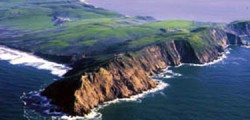… was authorized on this date in 1998.
The sky was the limit–literally! After the successful flight of Orville and Wilbur Wright in 1903, Americans of all races were stung by the love bug of flight. In the late 1920’s and 1930’s African Americans in great numbers began their love affair with flight. They learned the basics of flight on either American soil or abroad, and created their own flight schools and clubs.
This love affair was kindled in the late 1930’s, when the United States Government created Civilian Pilot Training Programs throughout the country to provide a surplus of pilots in case of a national emergency. African Americans were included in these programs, although trained at segregated facilities.
Their love of flight became fully ablaze amid World War II as political pressure challenged the government to expand the role of African Americans in the military. The Army Air Corps was the first agency to accept the challenge. Tuskegee Institute, a small black college in Alabama, was selected to host the “military experiment” to train African American pilots and support staff–thus the Tuskegee Airmen were born.
The outstanding performance of the over 15,000 men and women who shared the “Tuskegee Experience” from 1942-1946, is immortalized at the Tuskegee Airmen National Historic Site.
Source: National Park Service

 … was formed on this date in 1950 by combining the much smaller National Park established in 1929 (which included just the Tetons and the lakes) and the Jackson Hole National Monument established in 1943. From the
… was formed on this date in 1950 by combining the much smaller National Park established in 1929 (which included just the Tetons and the lakes) and the Jackson Hole National Monument established in 1943. From the  Point Reyes National Seashore contains unique elements of biological and historical interest in a spectacularly scenic panorama of thunderous ocean breakers, open grasslands, bushy hillsides and forested ridges. Native land mammals number about 37 species and marine mammals augment this total by another dozen species. The biological diversity stems from a favorable location in the middle of California and the natural occurrence of many distinct habitats. Nearly 20% of the State’s flowering plant species are represented on the peninsula and over 45% of the bird species in North America have been sighted.
Point Reyes National Seashore contains unique elements of biological and historical interest in a spectacularly scenic panorama of thunderous ocean breakers, open grasslands, bushy hillsides and forested ridges. Native land mammals number about 37 species and marine mammals augment this total by another dozen species. The biological diversity stems from a favorable location in the middle of California and the natural occurrence of many distinct habitats. Nearly 20% of the State’s flowering plant species are represented on the peninsula and over 45% of the bird species in North America have been sighted. 





